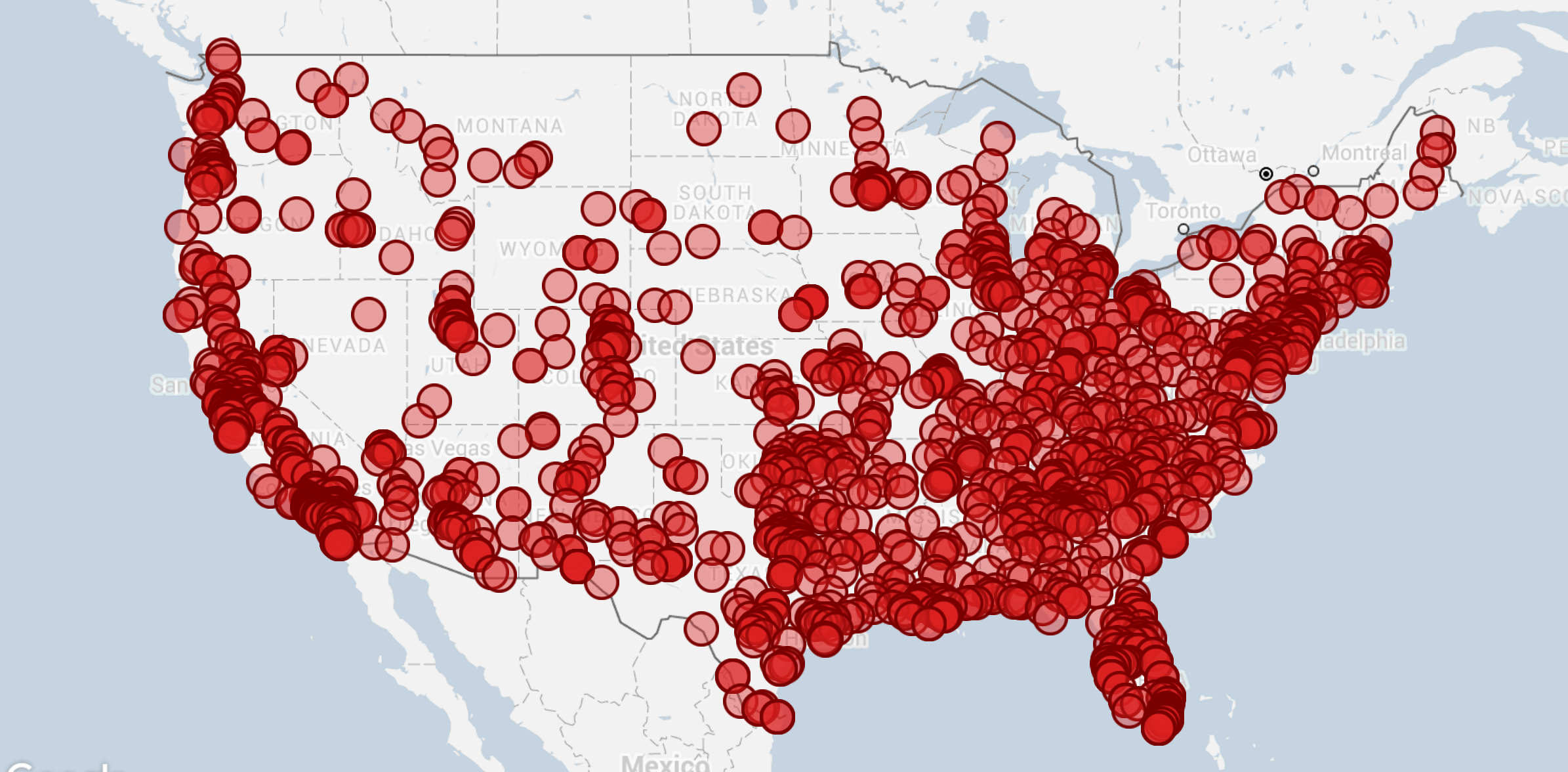Police Have Shot and Killed at Least 2,195 People Since Ferguson
Philando Castile, Alton Sterling, and Walter Scott
are just three of at least 2,195 people killed by
police since August 9, 2014, the day of the
Michael Brown shooting in Ferguson, Missouri.
Fatal Encounters, a nonprofit, has tracked these
killings by collecting reports from the media,
public, and law enforcement and verifying
them through news reports. Some of the data
is incomplete, with details about a victim’s
race, age, and other factors sometimes missing.
It also includes killings that were potentially
legally justified, and is likely missing some
killings entirely.
Vox’s Soo Oh created an interactive map with data
from Fatal Encounters. It shows some of the
killings by law enforcement since the Brown
shooting:

The map includes cases in which a police officer
shot and killed someone. But some of the shootings
— it’s hard to say how many — were
“suicide by cop,” when people kill themselves by
baiting a police officer into using deadly force.
The map doesn’t include non-shooting deaths,
such as vehicle crashes, stun guns, drug
overdoses, and asphyxiations.
The FBI already collects some of this data from
local and state agencies, but asVox’s Dara Lind
explained, that data is very limited. Reporting
homicides for participating agencies is mandatory,
but reporting the circumstances of homicides is
not. So we might know that thousands of people
die in a certain state, but we won’t always know
why those homicides happened and whether they
involved police. Participation in the FBI reporting
programs is also voluntary, making the number
of reported homicides in the federal data at best
a minimum of what’s going on across the country.
Since the historical data is so bad, it's hard to
gauge whether these types of killings are
becoming more common. But the Fatal
Encounters database is much more complete
than the FBI figures, giving some of the best
context we have for the wide range of police
use of force — especially as the issue continues
to capture national attention in the aftermath
of Brown’s death.
Correction: This article originally described
some incidents in which people died while
interacting with police as examples of police
using deadly force. But in some of the cases,
these people died due to other causes.
Vox’s Soo Oh created an interactive map with
data from Fatal Encounters. It shows some
of the killings by law enforcement since the
Brown shooting:
Police shootings and brutality in the US:
9 things you should know
Since the August 2014 police shooting of
Michael Brown in Ferguson, Missouri,
police in America have been under
heightened scrutiny. The Black Lives
Matter protests in particular have shined
a light on what many see as a systemic
emphasis on excessive use of force
by police, particularly on racial and
ethnic minorities.
So here's what you need to know about
use of force by police in America.
- 1. American police shoot and kill far more people than their peers in other countries
- 2. There are huge racial disparities in how US police use force
- 3. Cities across the country have been riddled with accusations of police abuse
- 4. There's no good data on how many people police kill each year
- 5. Police can use deadly force if they merely perceive a threat
- 6. Cops are almost never prosecuted and convicted for use of force
- 7. Killings of police officers on duty are near record lows
- 8. The federal government has helped the militarization of police
- 9. Reforms have focused on community policing and accountability — but that may not be enough
- 10. Share this card stack!
- 11. Explore

























No comments:
Post a Comment